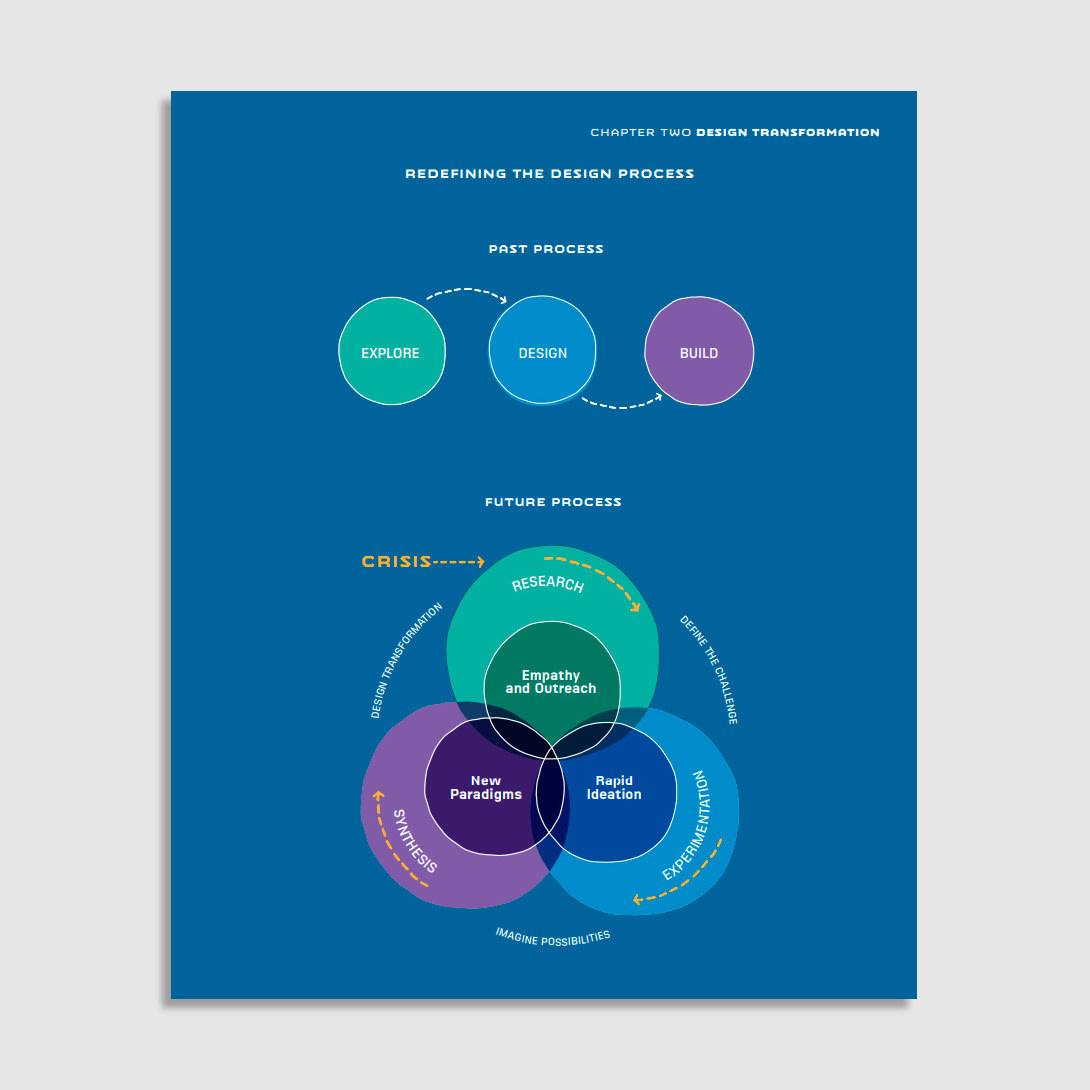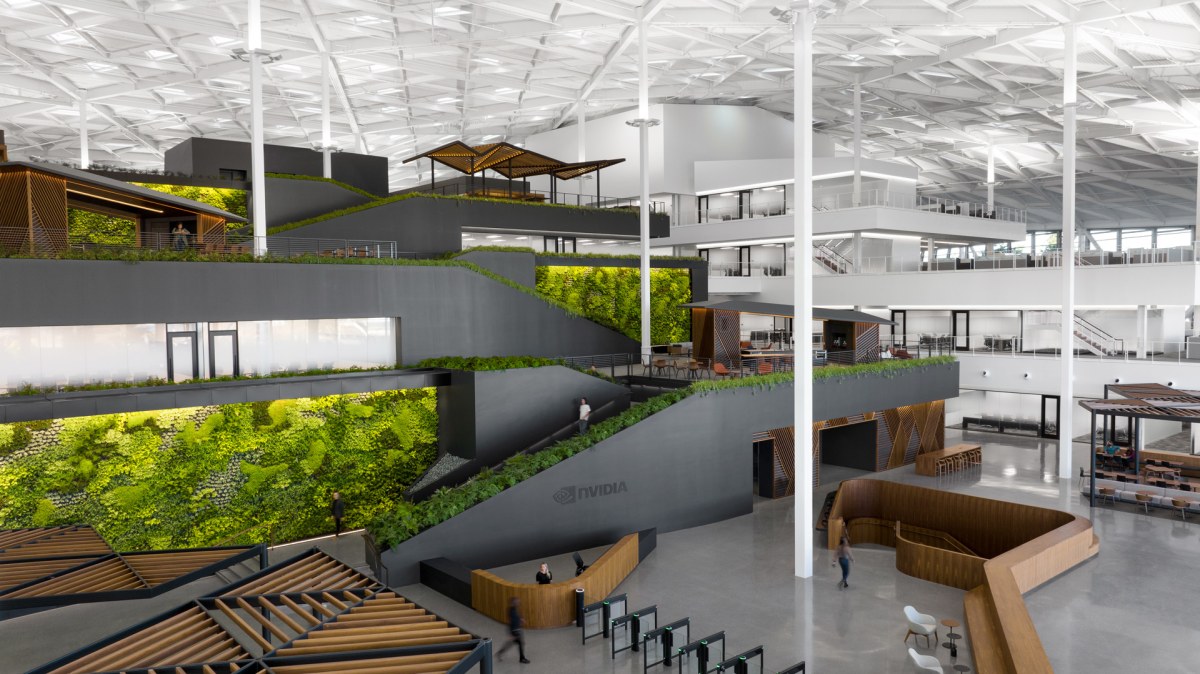Since 2004, Diane Hoskins and Andy Cohen have led the global architecture and design firm, Gensler, as co-CEOs. With dozens of offices and thousands of employees, it’s the biggest architecture firm in the world. Earlier this year, the two stepped into new roles with the company, and are now serving as the firm’s global cochairs. But that doesn’t mean they’re stepping back.
Hoskins and Cohen are using their new positions to push their firm—and the design profession at large—to use its talents in a more forceful way than ever before. In their new book, Design for a Radically Changing World (available March 11, 2024), Hoskins and Cohen highlight several global crises that are altering the needs of society, from climate change to economic instability. Design, they argue, should be aggressively involved in addressing these challenges and improving the ways in which people live. Rather than just designing nice buildings or satisfying a client’s bottom line, designers should be finding ways for their work to help make the world a better place.
Here, the two explain how these global forces are changing the responsibility of designers, how their firm’s scale can help address big challenges, and the power of co-leadership.
You write about the big forces shaping our time, including climate change, social injustice, economic volatility, geopolitical tensions, and the effects of the pandemic. These are all overlapping and causing what you call a crisis multiplier effect. What does that mean for the architecture industry, and how does it change the way Gensler works?
Andy Cohen: We believe that design is a catalyst for positive change, that design can make a difference in the world. Diane and I have been co-CEOs for 20 years now. We have 6,000 people, and last year we practiced in over 100 countries. So we believe that every day we impact millions upon millions of people’s lives, how they live and work and play. We believe our influence is really, really important as a leader in the industry. And design is not just about aesthetics. Design is about impact, and making a difference in people’s lives. The places and spaces that we create and live in every day, they shape us and our experiences in a profound way.

[Image: courtesy Gensler]
Your book argues that design processes need to move faster and be more nimble in order to contend with these issues. Are you seeing that happen in practice?
AC: These are massive challenges, these big crises, and the way we see it, they need global solutions, not just local solutions. Because we’re a global firm, as urban designers and architects, we can really look at this with a fresh eye, taking the best practices from around the world and bringing them to each client locally. That’s the difference. As a global firm, we have that global research and global knowledge. What’s happening in the world right now with de-globalization, the problems are trying to be solved locally; but these are borderless problems.
Diane Hoskins: A great example is what’s happening as people are not necessarily going into the office at pre-COVID levels. What we’re seeing now is a huge amount of vacancy in many of our office buildings, and at the same time, in every city that Andy and I have visited around the world, they’re experiencing a shortage of housing. So how do we marry the oversupply of one and the shortage of the other?
In these huge commercial districts, where there’s no residential, can we carve out some of that commercial use and insert residential use? That’s literally what’s happening right now. Our firm came up with an algorithm that is able to help a building owner understand the viability or the potential for their building to become a residential building. Probably 20% or 25% of the buildings that we test actually are viable for that kind of transformation.
We’re seeing now over and over again—and we’ve done thousands of these analytics now in every major city—that yes, we can accelerate the production of housing in our communities and we can help to bring value to buildings that are devalued because of the low demand for offices. And from a macro standpoint, this is also a way of bringing viability into areas that are single-use commercial.
People want to have live-work environments, and this is a way of taking an existing building stock and surgically coming in and adding back residential that’s going to turn that area into a 24/7 live-work community without having built a single new building.

Nvidia, Santa Clara, California [Photo: courtesy Gensler]
Since you work in cities all over the world, Gensler is uniquely positioned to have these kinds of replicable ideas. How do you look at the work your firm is doing in cities around the world and find those ideas to transplant or cross-pollinate in other cities?
DH: That’s a really important part of our message, is how impactful larger practices can be. In our profession, 90% of architecture firms are 10 people or less. This is a time of radical change, and the ability to bring the best ideas into cities across our world with immediacy is what’s needed. Scale is what we need to be able to share ideas, to be able to look at global ideas but really marry them with local context, local understanding, relevance, and creating the right solution.
We don’t want to transplant what we do in New York into Bangalore. We need to take ideas that are the best ideas in the world and marry them with what is relevant and right in Bangalore. We are a global firm that understands the power of local. We have over 55 offices around the world, and that is going to continue to grow as our firm grows because we really think it’s important to have a stake in our communities, and also to be able to engage in a real way around the table with stakeholders and bring what we’ve learned as a global collective and collaboration of designers to really help to solve these extremely challenging issues that are emerging around the world.
Pretty much since its founding in 1965, your firm has been known for not having a signature architectural style. It isn’t like founder Art Gensler‘s particular design aesthetic has guided your firm forever. Do you look at your big firm as a lot of little geographically scattered firms that just happen to have an umbrella over them, or is there really some kind of common thread to them?
AC: The common thread to them is our vision. Diane and I have been acting as co-CEOs and now cochairs for 20 years. When we stepped into our role, we created a vision for our firm that’s still alive today. Through every single part of our practice over the last 20 years, our vision continues to drive us forward, and that’s to create a better world through the power of design.
DH: We use this phrase, a one-firm firm. Total sharing. In a lot of firms, there’s this kind of competing even between offices for the same project, or designers keeping their knowledge to themselves and their team. It’s just the opposite at Gensler. We bring people together, someone from London, someone from L.A., someone from Chicago, working together on projects. That’s the norm. Every person at Gensler is actually working on projects with teams that involve people from other offices. That is extraordinary.
We believe strongly in the fact that being in diverse teams together is the quickest path to innovation. Having people who are going to see things in different ways because of their own background, because of their own experience, because of where they live and the context they’re bringing to the table, is how we’re able to ignite and excite innovation and that exchange of ideas.

The Residences at Rivermark, Baton Rouge, Louisiana [Photo: courtesy Gensler]
I’m curious how you see your roles shifting now that you’ve moved from being co-CEOs to cochairs. What do you see yourselves doing, and do you have any big goals in the coming years?
DH: Our firm is growing. We’re seeing deeper and deeper connectivity across the world with outside organizations, with other firms, and frankly even looking at the expansion of our business in new ways. It goes beyond interior design, architecture, urban planning, digital design. We’re looking beyond that. We’re looking at what’s going on with financing projects. We’re now looking at what it takes to continue to help to influence the unique solutions that are needed for decarbonization, for helping to heal communities that have been underinvested in, the resilience we need in places all over the world, especially in the Southern Hemisphere.
You have had two decades of experience guiding this firm through upswings, downturns, and pretty significant global events. For people leading other design firm, do you have any advice on how to navigate through uncertainty and maintain a long-term vision?
AC: It’s about impact. Designing for impact in our world is so important. It’s not just about each individual project, but the impact and influence we can have as a profession at large to really improve the world. Something that might help other firms, which Diane and I really instituted, is this strategy of co-leadership. Not only Diane and me, but throughout our firm, we have two or three leaders in every leadership role. And this has really positioned us well.
Rather than having one leader and a pyramid, we’ve created this flat organization around the globe. It’s 55 offices, 6,000 people, but it’s an extremely flat organization because of this co-leadership model. The idea is that everyone has aces and spaces, things that they’re great at and not so great at. But when you put people together with different aces, the sparks really fly because you have different points of view coming together, different backgrounds, different cultures. What that does is create the innovation, creates the sparks that push the firm forward.